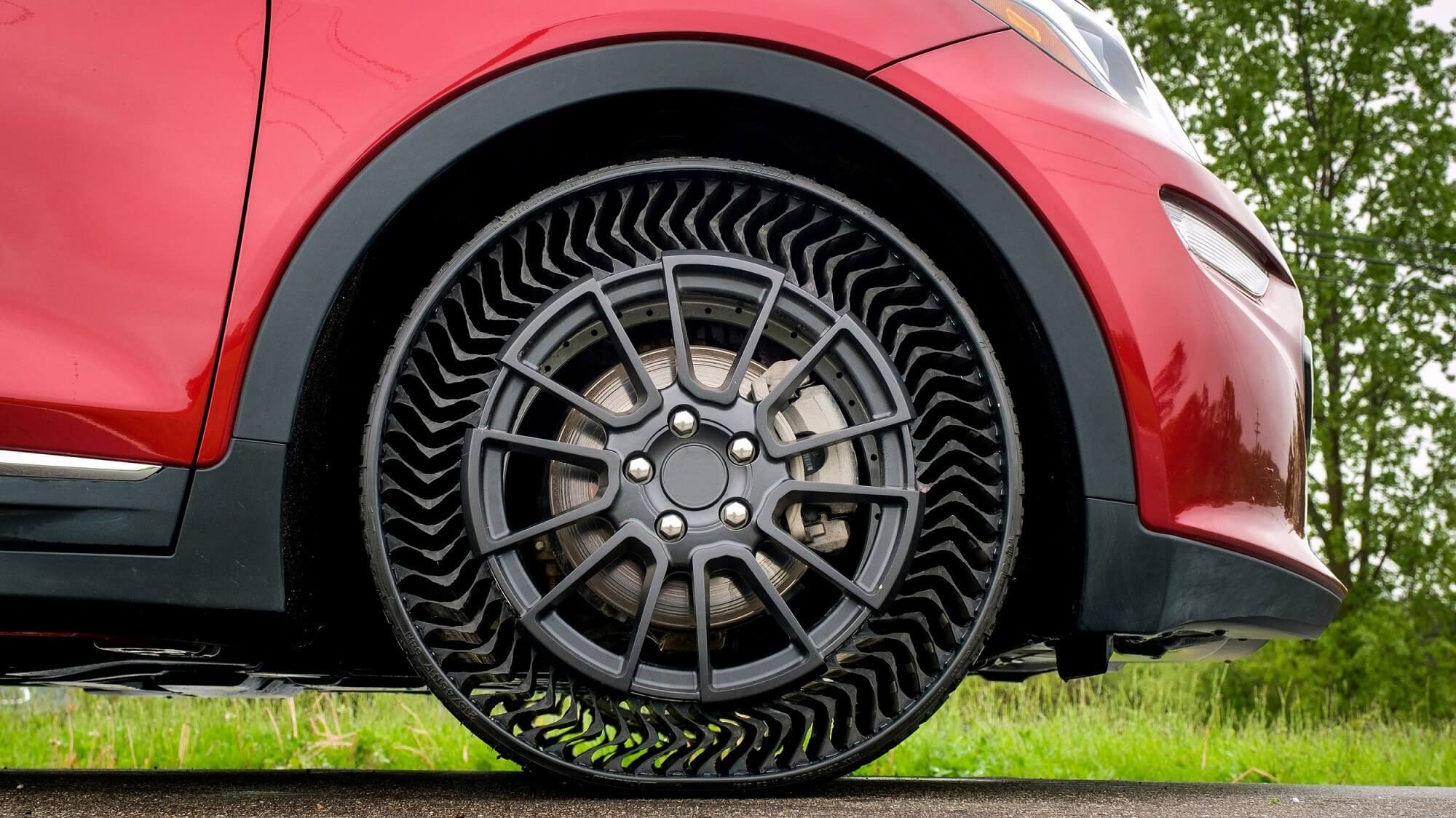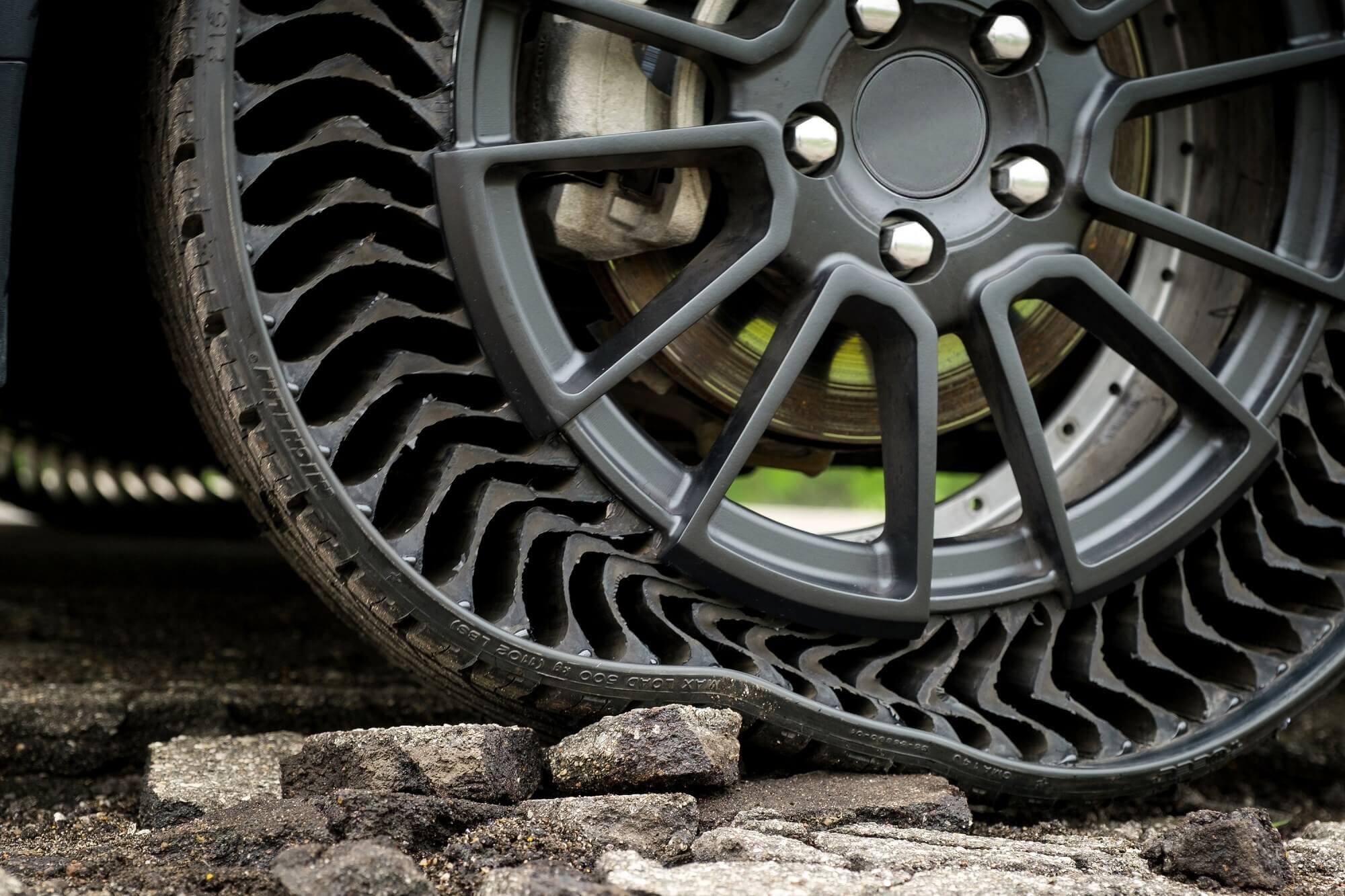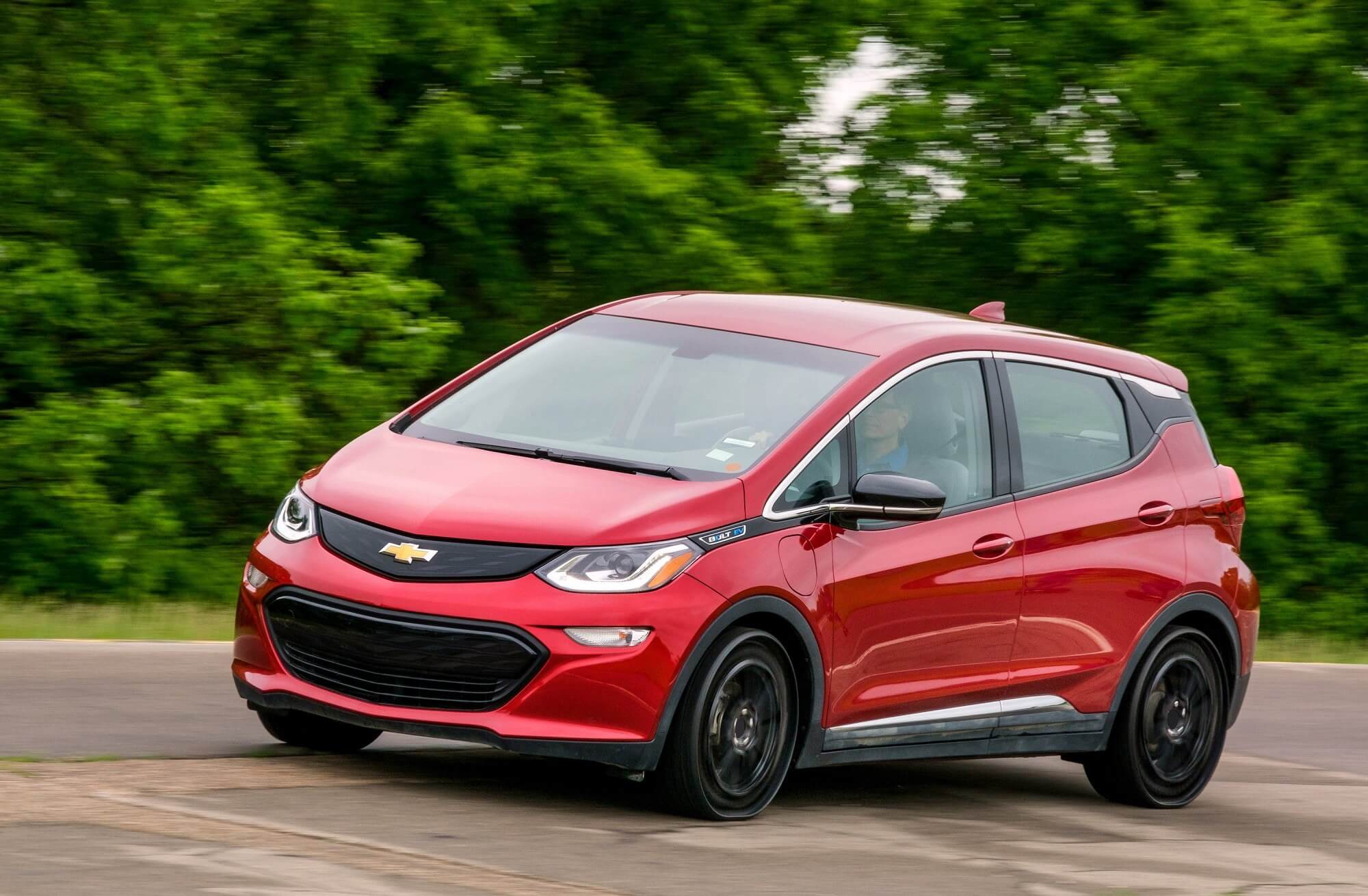In brief: Airless tires aren’t something new, but it looks like we’ll finally see them arrive in production cars within the next five years.

These type of tires are normally made for military, slow-moving, and off-road vehicles, but GM and Michelin have unveiled a version designed for passenger cars. Michelin’s Unique Puncture-proof Tire System, or Uptis, was recently presented at the Movin’On Summit for sustainable mobility, and will undergo real-world testing on a fleet of Chevrolet Bolt EVs later this year.

“General Motors is excited about the possibilities that Uptis presents, and we are thrilled to collaborate with Michelin on this breakthrough technology,” said Steve Kiefer, senior vice president, Global Purchasing and Supply Chain, General Motors. “Uptis is an ideal fit for propelling the automotive industry into the future and a great example of how our customers benefit when we collaborate and innovate with our supplier partners.”
The Uptis design is similar to Michelin’s Tweel concept from many years ago. It uses spokes made of composite rubber and resin-embedded fiberglass that sit between the outer edge of the tire and central aluminum wheel, removing the need for air. Unlike previous airless models, Uptis is designed to handle highway speeds and provide proper grip, writes autoblog.
Along with the obvious benefits of greatly reducing the chances of blowouts and flats, GM says the airless tires align with its vision of a world with zero crashes, zero emissions, and zero congestion. Uptis lowers the number of tires needing to be scrapped, reduces materials, energy, and emissions associated with the manufacture of unnecessary spares, and lasts longer as there’s no risk of wear from over/under inflation.

Uptis should also be extremely useful in the area of self-driving vehicles, allowing them to run for extended periods without the threat of flats.
https://www.techspot.com/news/80379-michelin-gm-airless-tires-passenger-cars-launch-within.html